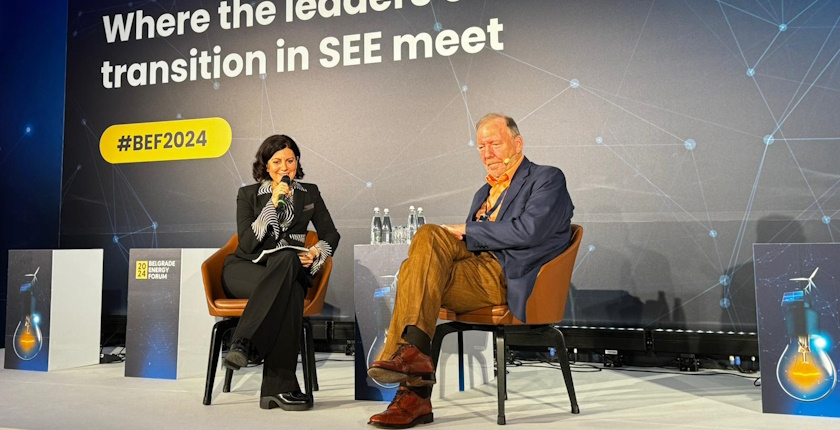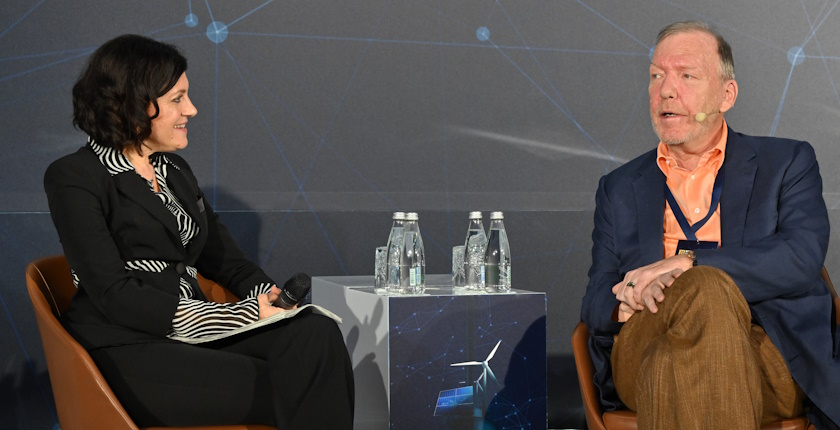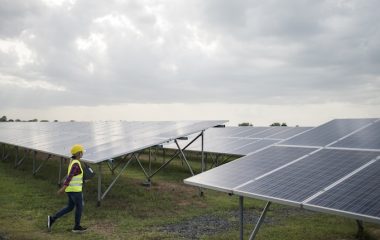
Europe needs to build around 7,500 gigawatts of renewable energy plants to create a 100% green electricity system, says Marc Crandall, founder and CEO of CWP Global. He expressed the belief that governments should influence prices on the market so as to reassure developers and banks that they can make profit from investing in renewables.
Speaking at Belgrade Energy Forum, Crandall opined that there are a lot of quality projects in Southeast Europe that are not being finalized because investors and banks are not certain they could sell the electricity at a price that works.
The auctions taking place in Serbia and the region must be on a larger scale, and the governments here are timid, according to Crandall, whose company is one of the biggest international developers of renewables in the region, including several projects in Serbia.
Markets can’t decide for themselves, so governments should set minimum prices
Noting that climate change is not a local problem, but a global one, he pointed out that implementing a green transition is in the interest of the whole world. The governments need to send “price signals that are brutal,” determining what mustn’t be done because it’s harmful to the climate, and what should be done, Crandall stressed. “Markets can’t decide. Markets operate on signaling,” he stated.
The CEO of CWP Global was interviewed on stage by the Energy Community Secretariat’s Head of Electricity Jasmina Trhulj, on behalf of Belgrade Energy Forum.
Further green energy development requires guaranteed minimum prices
Referring to the consequences of periods with zero or negative electricity prices, Crandall pointed out that governments should determine a minimum price threshold and intervene to completely restructure the price formation process, so that banks can accept renewable energy projects with confidence.
“We need to build something like 7,500 MW across Europe. Otherwise we melt. It’s a climate change issue. And whatever it costs. The job of the government is to keep us alive a hundred years from now. And that means they’ve gotta solve the CO2 problem. They’ve gotta solve the global warming problem. We can only do that if we phase out fossil fuels over time and replace them with renewables,” said Crandall.
Right now, however, there are no minimum prices, no feed-in tariffs, and it is very difficult, if not downright impossible, to contract the sale of electricity from renewable sources for a 10-year period, according to him. So the question is why banks would want to invest in something like that or lend for such projects with an uncertain outcome, in his opinion.
According to Crandall, governments should help determine a price floor that would convince financial institutions and investors that it is not unwise to invest in wind farms.

Opportunities in less developed markets
As for investments, he noted that much of Western Europe is already quite taken up, and that people don’t want to look at a wind tower from their window.
“We’re in Albania now, we’re in Ukraine, we’re in Moldova. We’re in places where people have not gone before. Because there’s still land. There’s still wind. And with coupled markets we can solve the European renewable energy problem,” he said.
Europe will always import hydrogen from places where production costs are lower
Discussing hydrogen projects in Europe, Crandall said Europe would always import large quantities of hydrogen from places where there is much more sunshine or wind and where gas can be produced at a much lower cost.
“We can make electricity in all the places where we are. And we can make green ammonia and green hydrogen for half the cost of the one in Europe. It’s just not as windy and not as sunny here as the places we’re working… We’re really in distant, mostly desert locations in North Africa and Western Australia. The very southern tip of South America,” he stated.
CWP built Europe’s largest wind farm in Romania in 2012
Speaking about CWP Global and the reasons for its arrival in Southeast Europe, Crandall recalled that in 2006 the overall renewable energy industry was focused on very small projects, of 20 MW or 30 MW. No project in Europe cost more than USD 100 million, he noted.
“It struck me, coming from my petroleum background, that USD 100 million wasn’t really a lot of money… So we had lots of conversations in the financial markets and concluded that the banks, in fact, would prefer to do bigger things. And then we thought, where can we find real estate available to do something big? In 2006 there were developers all over Germany and France and every place you looked in Western Europe. But hardly anybody had come to Southeast Europe. And you could rent lots and lots of land,” he explained.
So in 2008, the company started building the 600 MW Fântânele-Cogealac in Romania, the largest onshore wind farm in Europe. It cost slightly over EUR 1 billion, Crandall stated. The facility was put into operation in 2012.
He added that CWP is still focusing on large-scale, truly impactful projects. The capacity under development that could be ready for construction in the next five years is about 6 GW, according to Crandall.
CWP Europe is a silver sponsor of Belgrade Energy Forum 2024.


















Be the first one to comment on this article.